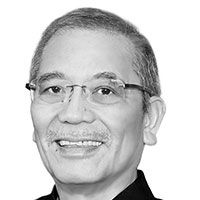Caring for Earth
By 2050 we will need five times the electricity we use today; and we will need 10-12 times the clean energy in use today. Even as we do this, we must continue to improve access to 24/7 electricity for billions of people (in the case of the Philippines, millions of households) who currently do not have it reliably in their lives if we are to even begin uplifting them from poverty.
Reducing the carbon intensity of electricity is a complex balancing act. Adding more 24/7 renewable energy (RE) sources like hydro and geothermal power to the grid is straightforward and should be encouraged where we can. What needs to be done thoughtfully is adding more intermittent RE sources like solar and wind. Their variable and intermittent nature necessitates that we match them with more storage to account for the fact that they’re not there when night falls or on cloudy or windless days.
However, batteries are only capable of running 3-4 hours and thus fall short of fully providing power for the 10-12 hours before the sun rises or the stretches of cloudy or windless days or even weeks. This is why President BBM correctly points out the need for a low carbon emission fuel like natural gas to act as the bridge fuel that’s technically more suited for complementing the variable nature of RE. Without this we cannot keep our lights on and affordable as we scale-up and deploy more intermittent renewable energy sources into our grids.
Of course, over time as more clean energy and storage is added into our grids, we must look toward decommissioning our fossil fuel powered plants: first the coal plants, and then ultimately the oil and natural gas plants. For the latter they can either be repowered with green fuels like hydrogen as they become feasible in the coming decade or outright decommissioned before 2050, similar to the process done for the coal plants earlier. We ought to keep an eye out for international funding for decommissioning these plants earlier than their useful lives. Such funds are increasingly becoming more available.
Decarbonizing and scaling up a green electricity grid over the next three decades is probably the greatest energy transition in the history of mankind. It’s not just changing the electricity system but building a new global energy system with components we have never built before and on a massive scale. This will need nothing short of collaborative action among various players that today consider themselves competitors. And these also need well-coordinated and timely action on the part of regulators who must be decisive and well-versed on the elements that make for a successful and just energy transition. The path is made more complex today by the Russia-Ukraine war’s effects on energy prices worldwide, and our need to secure energy supplies at a time when all countries in the world are scrambling and paying top dollar to secure theirs to avoid Russian supplies and energy blackmail.
You may ask why the Philippines should undertake this, given our limited resources and the fact that we account for only 0.4 percent of global emissions. I would answer that question in this way: It’s apparent that the world is changing, not as fast as it needs to, but eventually it will, and it must. The impacts of the climate crisis as well as climate action that will be demanded of everyone are among the forces in history that will transpire “gradually and then suddenly.” If we’re not prepared and conveniently ignore it, we’ll be overwhelmed and not recognize the world around us in the coming 30 years.
The science tells us we no longer have a choice. Unless we have more of these pandemics that choke growth, there will no longer be any time extensions. Since we have limited resources, we must choose to spend it wisely and in a future-proof manner.
We are the fourth most climate vulnerable nation on earth, some say even THE most vulnerable. The poster boys for what’s to come are massively destructive typhoons like Yolanda (powerful 314 kph winds), Ondoy (massive precipitation in highly concentrated cities like Metro Manila), Urduja (lingered and stayed stationary dumping rain on us for three consecutive days). Let’s expect more of these and prepare. Global warming’s higher average temperatures also mean extreme wet seasons; but it also means more extreme dry ones when they come, with dire consequences for our fresh water supplies and even the possibilities of forest fires as is happening in many developed countries like Australia, the US and all over Europe as well.
With 60 percent of Filipinos living in coastal areas, sea-level rise is a major threat. Temperatures on the planet are rising fastest at the poles. This will have grave consequences for sea-level rise as tipping points are triggered in the world’s cryosphere. Permafrost areas in the Arctic circle are also recently discovered to contain enormous amounts of methane (80 times more potent a GHG than carbon dioxide). If triggered, it’s a tipping point that could release massive emissions equivalent to that of China today. Except no amount of climate negotiations can pull that back.
One thought I want to emphasize is something I remember Al Gore saying in 2016 at the Climate Reality Project leadership training at the Sofitel Manila. “All our infrastructure was built for a world that’s now changed.” At 1.1 degrees Celsius of warming, where we are today, the world has already changed. It will be even more so as we successfully navigate the journey to limiting warming to 1.5 degrees Celsius.
In addition to creating a future-ready energy system, our being fourth on the world’s climate vulnerability list necessitates that we prepare Philippine cities, communities and infrastructure for resilience in a climate-changed world. We need to do this in a systematic and collaborative way if we want to succeed and make serious headway in tackling other issues like hunger, poverty and the other pressing Sustainable Development Goals of our time. Trying to solve those will be futile if we don’t build for the resilience we need and if we don’t ultimately “solve climate change.”
Having said all that, it is clear that the forces being triggered by the climate crisis and planetary degradation are very real. They’re shaping local and global politics like no other time in history. Our social, economic, and political systems are all causing us to overshoot almost all of our planet’s ecological ceilings. Biodiversity loss is happening at a rate that’s hundreds of times faster than it’s been over the last ten million years because of human activity. On the average, we use up 1.75 Earths each year to feed and fuel our current economies and lifestyles. Developed country lifestyles use up an average of four Earths.
Yet the inequality of benefits has caused massive shortfalls in the provision of basic foundations for billions of people. Poverty, hunger, loss of livelihoods have triggered wars, conflicts and mass migration all over the world. We’re heading into a more unequal and politically unstable world yet one that’s still driven primarily by metrics such as profit maximization, maximization of shareholder value and gross domestic product (GDP) growth. Remember too that healthy forests and trees are never given any value in GDP until they’re cut down and used as wood. Rich schools of fish, corals and turtles are also not reflected in GDP until they appear on your dinner plate or hung as ornaments on your wall or as table décor.
Technology or even geo-engineering by themselves will not save the day for us. The times call for new paradigms and social constructs. We will need to measure progress using new metrics and reshape our way of life to thrive in a changed and rapidly changing world. It’s all about reimagining our relationship to the planet and to one another. The flipside of the word Anthropocene is that if humans have such immense power to degenerate the Earth, if we so choose, humanity can also wield the same power to change course and regenerate it, not just for the sake of currently living humans but for the millions of other species that co-inhabit our world, today and tomorrow.
* * *
This article is excerpted from Mr. Lopez’s remarks at the 4th Philippine Environment Summit held last Feb. 22 in Tagaytay City.
- Latest
- Trending

























